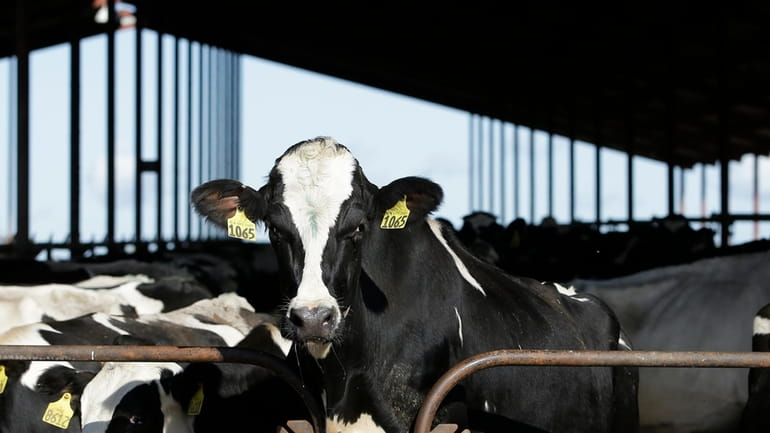Bird flu spreading among cows shows we might not have learned COVID's lessons

Cows are seen at a dairy in California, Nov. 23, 2016. The U.S. Food and Drug Administration said Tuesday, April 23, 2024, that samples of pasteurized milk had tested positive for remnants of the bird flu virus that has infected dairy cows. Credit: AP/Rich Pedroncelli
A virus spreads, its method of transmission is unknown, testing is sporadic, results are not shared with enough speed or detail, government agencies do not coordinate as they should, public communication is neither swift nor clear, scientific and public uncertainty abounds.
It reads like a recap of the early days of the COVID-19 pandemic. It also describes the ongoing spread of the H5N1 virus, more commonly known as bird flu.
The current infection was detected in four dairy herds in Texas and Kansas in late March, and has since spread to herds in at least six other states.
You might be saying to yourself: Wait, bird flu in cows? And it would be a reasonable question since bird flu has never before been found in cows. This is a novel form of transmission.
And then, amid assurances by various state and federal officials that there is nothing to be alarmed about, the Food and Drug Administration on Thursday revealed that about 20% of the retail milk samples it tested around the nation contained fragments of the bird flu virus. And again, those officials say worry is not necessary because milk sold at retail is pasteurized and the heating process kills viruses.
Then you read the official FDA release which says the test results “do not necessarily represent actual virus that may be a risk to consumers. Additional testing is required to determine whether intact pathogen is still present and if it remains infectious, which would help inform a determination of whether there is any risk of illness associated with consuming the product.”
You don't have to be an alarmist to be alarmed about the words “necessarily,” “if,” and “whether there is any risk” in that passage — reminiscent of other FDA website language that bird flu does not “normally” infect humans and that the term “highly pathogenic” refers to the flu's severity for birds but “not necessarily” for humans.
The qualifiers are thin gruel for a nation made queasy by the communication misfires of the COVID pandemic.
So far, one dairy worker in Texas has been infected, and recovered, the only human case that's been confirmed — though amid scarce testing, that's a floor not a ceiling.
Other numbers are concerning. In 2022, a bird flu outbreak in 67 countries on five continents resulted in the deaths of more than 131 million domestic poultry, either from the illness or culling, the World Health Organization reports. It's a measure of how devastating bird flu is to avian species in the wild or elsewhere; one infected bird on a poultry farm means the entire flock must be killed to stop transmission.
Now worries are growing around the possible infection of other species. Since 2020, bird flu has been spreading worldwide among animal species like cats, dogs, skunks, bears, seals and porpoises. And now cows. In South America alone, H5N1 has killed more than 600,000 wild birds and 50,000 animals. One photo is particularly haunting. It shows a beach in Argentina littered with the carcasses of dozens of elephant seals killed by bird flu.
We might get lucky. H5N1 might never figure out how to spread among humans. If it does, it might not be severe. The point is that there is much we do not know. But we do know this: When these viruses do spread to humans, we have a small window in which to react and stop them before we lose control. Are we prepared to do that, or are we still fighting the last war?
As COVID subsided, we told ourselves we would not be surprised like that again. Live and learn, as the saying goes.
Then the FDA comments on the milk in our stores: “To date, we have seen nothing that would change our assessment that the commercial milk supply is safe.”
To date.
Perhaps “learn and live” would be more appropriate.
Columnist Michael Dobie's opinions are his own.

